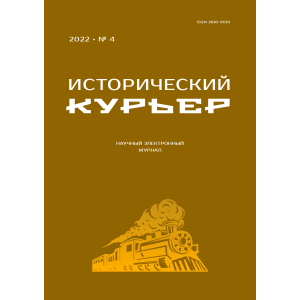Presented issue of the journal is devoted to analysis of regional experience in implementation of Russian economic reforms during the second half of the 19th – early 21st centuries. The task was to investigate pre-Soviet, Soviet and post-Soviet stages of economic reforms, as well as to trace general and specific influence of spatial factor on the plans, implementation and results of reforms in agrarian and demographic spheres. Circle of authors is represented by both leading scientists and novice researchers. Geography of the group of authors is quite wide.
 Reforms and Economic Development
Reforms and Economic Development
V.M. Arsentiev, A.E. Makushev
The Corporatization of Industrial Production in the Context of State Policy in the Late 19th – Early 20th Century (on the Example of the Middle Volga Region)
One of organizational forms of industrial production in Russia, which originated in the first half of the 19th century and was rapidly gaining momentum, was joint-stock entrepreneurship. In conditions of accelerating the processes of early industrial modernization in the late 19th – early 20th century government was forced to bring legal framework of joint-stock companies in line with their increasing weight in the structure of domestic economy. Taking into account territorial specifics of the processes of corporatization, it is very important to understand how legislative initiatives of the state were refracted in the practice of joint-stock foundation in certain regions of Russia. Within the framework of this article, study of this issue has been conducted in the territorial framework of Middle Volga region. Author shows scale of joint-stock entrepreneurship in the region and its specifics. On example of individual unit partnerships and joint-stock companies, role of family principle in their activities is investigated.
Publishing: 28/08/2022
How to cite: Arsentiev V.M., Makushev A.E. The Corporatization of Industrial Production in the Context of State Policy in the Late 19th – Early 20th Century (on the Example of the Middle Volga Region) // Historical Courier, 2022, No. 4 (24), pp. 11–21. [Available online: http://istkurier.ru/data/2022/ISTKURIER-2022-4-01.pdf]
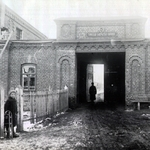 Reforms and Economic Development
Reforms and Economic Development
D.A. Mamontova
Forced Labor in the Practice of Enforcing the Sentences in West Siberia in the 1920s
Article is devoted to the study of ways to reform and practice of using forced labor of convicts in 1920s. The state of places of detention in Western Siberia (material insecurity, amount and qualifications of staff, overcrowding in prisons) did not allow fulfilling requirements for employment of prisoners. Principles of humanizing the execution of punishment through the sphere of labor and undertaken reforms did not receive the required resource support, as a result, labor evolved from a means of correction into forced labor.
Publishing: 28/08/2022
How to cite: Mamontova D.A. Forced Labor in the Practice of Enforcing the Sentences in West Siberia in the 1920s // Historical Courier, 2022, No. 4 (24), pp. 22–31. [Available online: http://istkurier.ru/data/2022/ISTKURIER-2022-4-02.pdf]
 Reforms and Economic Development
Reforms and Economic Development
L.N. Lazareva
Economic Reform of 1965 in the Context of the Problem of Multifactorial Causes of the Collapse of the USSR
Author analyses economic reform of 1965 reform in the context of possibilities of reformatting existing economic model. “Stalinist” economic model was based on the paradigm of managing national economy as a “single factory”. Basic concept of “Kosygin” reform of “Kharkiv” development model, which assumed a transition to a high degree of independence of enterprises, contradicted the Stalinist system.
The publication was prepared with the financial support of the RFBR, project 21-09-43005 “Methodology for the Study of the Causes of the Collapse of the USSR”.
Publishing: 28/08/2022
How to cite: Lazareva L.N. Economic Reform of 1965 in the Context of the Problem of Multifactorial Causes of the Collapse of the USSR // Historical Courier, 2022, No. 4 (24), pp. 32–44. [Available online: http://istkurier.ru/data/2022/ISTKURIER-2022-4-03.pdf]
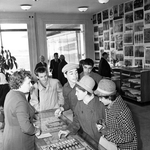 Reforms and Economic Development
Reforms and Economic Development
A.A. Guzhalovsky
Deficit and Shadow Economy in Soviet Belarus on the Background of Economic Reforms of the Middle 1950s – Middle 1960s
Article reveals negative processes in the sphere of consumption in Belarusian SSR during the years of Khrushchev reforms in the form of shortage of consumer goods, food, services, as well as the shadow sector of the economy. Scientific novelty of the research lies in the fact that for the first time was carried out complex analysis of the topic under study, based on publications in periodical press of the “thaw” era and previously unattractive materials of the National Archive of the Republic of Belarus. As a result, in regional context, it is shown how negative processes in Soviet economy intensified in the mid-1950s – mid-1960s.
Publishing: 28/08/2022
How to cite: Guzhalovsky А.А. Deficit and Shadow Economy in Soviet Belarus on the Background of Economic Reforms of the Middle 1950s – Middle 1960s // Historical Courier, 2022, No. 4 (24), pp. 45–57. [Available online: http://istkurier.ru/data/2022/ISTKURIER-2022-4-04.pdf]
 Reforms and Economic Development
Reforms and Economic Development
S.N. Andreenkov
The Impact of Market Reforms on the Siberian Economy (1990s)
In the history of Russia, period of 1990s was a time of profound and dramatic changes in all spheres of life of Russian society. Reforms provided by government of B.N. Yeltsin – E.T. Gaidar radically changed economic system of country. For domestic producers, forced market modernization was extremely painful. Its impact on economy of various regions of Russia has yet to be studied by historians. This article analyzes features of functioning of economic system of Siberia, largest region of the country, in conditions of cardinal transformation of economic model in 1990s. Research aims to expand factual base of the topic for preparation of generalizing scientific and historical works on the history of Siberia of post-Soviet period.
Publishing: 28/08/2022
How to cite: Andreenkov S.N. The Impact of Market Reforms on the Siberian Economy (1990s) // Historical Courier, 2022, No. 4 (24), pp. 58–71. [Available online: http://istkurier.ru/data/2022/ISTKURIER-2022-4-05.pdf]
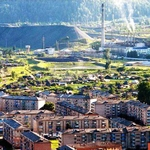 Reforms and Economic Development
Reforms and Economic Development
E.E. Tinikova, E.V. Prishchepa
Socio-Economic Problems of Single-Industry Settlements of Khakassia in the Context of the Market Economy
For Khakassia, decline in industrial production and termination of activities of some enterprises as a result of rejection of planned economy turned out to be very painful, as they affected the life of medium and small towns represented in region mainly by single-industry settlements. Curtailment of production activities at city-forming enterprises in such settlements entailed disastrous consequences, especially in the socio-economic sphere. Purpose of the article is to show the need to solve socio–economic problems of single-industry settlements of Khakassia as one of the most important tasks facing regional authorities.
The research was carried out with the financial support of the RFBR and the Government of the Republic of Khakassia within the framework of the research project “Social Problems of Single-Industry Towns of Khakassia: Factors, Dynamics, Search for Solutions”, project No. 19-49-190001.
Publishing: 28/08/2022
How to cite: Tinikova E.E., Prishchepa E.V. Socio-Economic Problems of Single-Industry Settlements of Khakassia in the Context of the Market Economy // Historical Courier, 2022, No. 4 (24), pp. 72–79. [Available online: http://istkurier.ru/data/2022/ISTKURIER-2022-4-06.pdf]
 Agrarian Transformations in the 20th Century
Agrarian Transformations in the 20th Century
V.V. Kondrashin
Politics “Facing the Village”: Did the NEP Have Potential in the Agrarian Sector of the Country’s Economy?
Based on analysis of “Face to the Village” policy, the problem of NEP potential is considered. NEP peasant economy could continue to exist and develop, increasing the volume of agricultural production. But its low marketability created problems for accelerated industrialization of the country. The threat of Bolsheviks’ monopoly on power was also created by “revival of Soviets”. As a result, NEP was broken by authorities as soon as there was a danger in form of peasant resistance to slowing down the pace of industrialization of country during the grain procurement campaigns of 1927–1929.
The article was prepared as part of the approbation of chapter 13 of volume “History of Russia” of the Institute of Russian History of the Russian Academy of Sciences.
Publishing: 28/08/2022
How to cite: Kondrashin V.V. Politics “Facing the Village”: Did the NEP Have Potential in the Agrarian Sector of the Country’s Economy? // Historical Courier, 2022, No. 4 (24), pp. 80–92. [Available online: http://istkurier.ru/data/2022/ISTKURIER-2022-4-07.pdf]
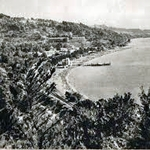 Agrarian Transformations in the 20th Century
Agrarian Transformations in the 20th Century
O.V. Bershadskaya
Poor Strata of the Population in the Social Structure of the Black Sea Village (1920s)
Author examines factors that caused the predominance and gradual increase in share of poor strata in Black Sea village. Lack of land, roads and opportunities for intensification of economy led to impoverishment. Peasant mutual aid committees, created to support poor farms, proved ineffective due to disunity of population, lack of traditions of communal mutual assistance, presence of patron-client relations among a number of nationalities, lack of funds and competent workers.
Publishing: 28/08/2022
How to cite: Bershadskaya O.V. Poor Strata of the Population in the Social Structure of the Black Sea Village (1920s) // Historical Courier, 2022, No. 4 (24), pp. 93–98. [Available online: http://istkurier.ru/data/2022/ISTKURIER-2022-4-08.pdf]
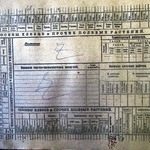 Agrarian Transformations in the 20th Century
Agrarian Transformations in the 20th Century
V.A. Il’inykh
Agricultural Censuses in Siberia in 1920s: Organization and Processing Methods
Author reconstructs organization of agricultural censuses in Siberia in 1920s and methods of processing their materials. Censuses were conducted on the basis of methods of Zemstvo pre-revolutionary statistics. It was found that peasants downplayed the size of their farms in order to reduce severity of taxation. Statistical agencies used materials from budget and other surveys to find out the extent of under-reporting, and carried out control measures. Improvement of methodology for determining amount of under-accounting led to periodic correction of officially accepted indicators.
Publishing: 28/08/2022
How to cite: Il’inykh V.А. Agricultural Censuses in Siberia in 1920s: Organization and Processing Methods // Historical Courier, 2022, No. 4 (24), pp. 99–110. [Available online: http://istkurier.ru/data/2022/ISTKURIER-2022-4-09.pdf]
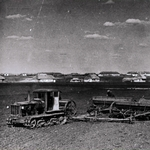 Agrarian Transformations in the 20th Century
Agrarian Transformations in the 20th Century
A.A. Plyasulya
Forced State Farm Construction in Western Siberia in 1928–1931
Author examines the course of forced state farm construction in Western Siberia at the turn of 1920s – 1930s. Specialized state farms were intended to make a significant contribution to solving the food and raw materials problem. It is shown that in 1928–1929 the emphasis was primarily on creation of new grain state farms, and since 1930 active organization of new livestock farms began. It was revealed that the state farms did not meet expectations placed on them. The main problem of the early 1930s was the low profitability and productivity of state farms with high production costs.
Publishing: 28/08/2022
How to cite: Plyasulya A.A. Forced State Farm Construction in Western Siberia in 1928–1931 // Historical Courier, 2022, No. 4 (24), pp. 111–122. [Available online: http://istkurier.ru/data/2022/ISTKURIER-2022-4-10.pdf]
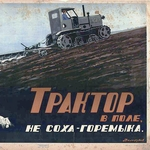 Agrarian Transformations in the 20th Century
Agrarian Transformations in the 20th Century
V.B. Laperdin
Economic State of Machine and Tractor Stations of West Siberian Region in 1930s
Author examines economic situation and financial condition of machine and tractor stations (MTS) of West Siberian Region in 1930s. It is shown that presence of several sources of financing and independence of management of the stations led to decrease in state control over economic situation of MTS. Many stations ended fiscal year with significant losses, which were subsequently covered by state. Main items of expenditure were administrative and economic needs, repairs and fuel. For all listed items, MTS spent significantly more money than planning organizations expected. Unprofitability of machine-tractor stations led to the search for optimal form of their financing and reorganization of the system in 1938.
Publishing: 28/08/2022
How to cite: Laperdin V.B. Economic State of Machine and Tractor Stations of West Siberian Region in 1930s // Historical Courier, 2022, No. 4 (24), pp. 123–134. [Available online: http://istkurier.ru/data/2022/ISTKURIER-2022-4-11.pdf]
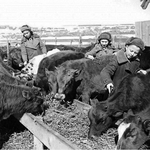 Agrarian Transformations in the 20th Century
Agrarian Transformations in the 20th Century
S.V. Sharapov
Animal Husbandry of Novosibirsk Region in the Context of State Agrarian Policy on the Eve and During the Great Patriotic War
Author examines sectoral aspect of agrarian crisis of 1940s on example of Novosibirsk region. Study focuses on the analysis of the factors of peacetime and wartime that brought the region’s animal husbandry to a critical state.
The research was carried out with the financial support of the RFBR in the framework of the scientific project No. 21‑09-43020 “Agrarian policy in the USSR and regional features of its implementation (1922–1991)”.
Publishing: 28/08/2022
How to cite: Sharapov S.V. Animal Husbandry of Novosibirsk Region in the Context of State Agrarian Policy on the Eve and During the Great Patriotic War // Historical Courier, 2022, No. 4 (24), pp. 135–147. [Available online: http://istkurier.ru/data/2022/ISTKURIER-2022-4-12.pdf]
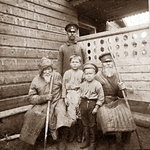 Demographic Development in the Context of Economic Reforms
Demographic Development in the Context of Economic Reforms
V.A. Zverev, I.I. Ponomarev
Siberian Cossack Army: Renewal of Generations of Cossacks and Non-Cossack Population at the End of the Imperial Period
Author gives quantitative characteristic of the processes of reproduction of Cossack and other, non-Cossack, population in Siberian Cossack army for the period 1894–1915. It is established that fact of an increase in natural population growth over time (among the Cossacks – to the scale of demographic “explosion”) was a result of reduction in mortality. Conclusion is made about appearance in military community of the first signs of gradual replacement of traditional type of renewal of generations by modern orders.
Publishing: 28/08/2022
How to cite: Zverev V.A., Ponomarev I.I. Siberian Cossack Army: Renewal of Generations of Cossacks and Non-Cossack Population at the End of the Imperial Period // Historical Courier, 2022, No. 4 (24), pp. 148–163. [Available online: http://istkurier.ru/data/2022/ISTKURIER-2022-4-13.pdf]
 Demographic Development in the Context of Economic Reforms
Demographic Development in the Context of Economic Reforms
O.B. Dashinamzhilov
Fertility and Mortality of the Urban Population of the Novosibirsk Region in 1959–1970: Regional Factors and Features
In the article, with involvement of large number of sources, it was revealed that historical development of Novosibirsk region influenced the dynamics and characteristics of reproduction of local urban population. It was determined that the birth rate and mortality in region were lower than average in Western Siberia, mainly due to a more educated population, high proportion of employees and those engaged in intellectual work, and the dominance of administrative center in urban settlement system.
Publishing: 28/08/2022
How to cite: Dashinamzhilov O.B. Fertility and Mortality of the Urban Population of the Novosibirsk Region in 1959–1970: Regional Factors and Features // Historical Courier, 2022, No. 4 (24), pp. 164–174. [Available online: http://istkurier.ru/data/2022/ISTKURIER-2022-4-14.pdf]
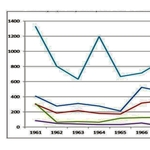 Demographic Development in the Context of Economic Reforms
Demographic Development in the Context of Economic Reforms
R.V. Pavlyukevich
The Impact of Khrushchev’s Transformations on Migration Flows between Krasnoyarsk, the Kazakh SSR, and the Central Asian Republics in the 1960s
Author analyzes the impact of reforms and transformations of N.S. Khrushchev era on the development of migration flows between the city of Krasnoyarsk, Kazakh SSR and Soviet republics of Central Asia in 1961–1970. In course of the analysis, author comes to conclusion that migration balance between Krasnoyarsk, Kazakh SSR and Central Asia was negative, with exception of only republic – Kazakh SSR, which is a consequence of rather contradictory policy of the state. During the period under review, Krasnoyarsk was recipient of a new population within RSFSR, but relative to republics of Central Asia, it acted as a donor. At the same time, total share of these flows relative to entire migration associated with Krasnoyarsk was low.
Publishing: 28/08/2022
How to cite: Pavlyukevich R.V. The Impact of Khrushchev’s Transformations on Migration Flows between Krasnoyarsk, the Kazakh SSR, and the Central Asian Republics in the 1960s // Historical Courier, 2022, No. 4 (24), pp. 175–186. [Available online: http://istkurier.ru/data/2022/ISTKURIER-2022-4-15.pdf]
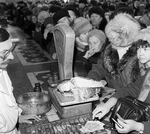 Demographic Development in the Context of Economic Reforms
Demographic Development in the Context of Economic Reforms
A.A. Burmatov
Reproduction of the Population of Western Siberia in the Conditions of Transition to the Market (1989–2002)
Author examines demographic situation in one of the largest regions of Russia – Western Siberia in 1989–2002. This was a period of radical economic and social reforms, purpose of which was transition to market relations. Change in economic model of development had a strong impact on reproduction of population. The birth rate significantly decreased, mortality rates increased, and the life expectancy of the population sharply decreased. This process was not unidirectional. Periods of deterioration in demographic situation were replaced by times of relative well-being.
Publishing: 28/08/2022
How to cite: Burmatov A.A. Reproduction of the Population of Western Siberia in the Conditions of Transition to the Market (1989–2002) // Historical Courier, 2022, No. 4 (24), pp. 187–202. [Available online: http://istkurier.ru/data/2022/ISTKURIER-2022-4-16.pdf]
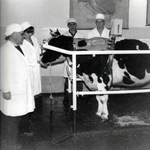 Open Archives
Open Archives
D.S. Orlov
The Development of Animal Husbandry in the Altai Territory in the Second Half of the 1980s (Explanatory Note of the Veterinary Department of the Agro-Industrial Committee Altai Territory)
Publication introduced into scientific circulation explanatory note of veterinary department of Altai Regional Agro-Industrial Committee “To the veterinary report on Gorno-Altai Autonomous Region for 1986”, identified in funds of State Archive of the Altai Territory. Its content is important for understanding peculiarities of development of agricultural sector in second half of 1980s. Publication is preceded by an introductory article, which analyzes dynamics of livestock production in the region in last Soviet five-year plan.
Publishing: 28/08/2022
How to cite: Orlov D.S. The Development of Animal Husbandry in the Altai Territory in the Second Half of the 1980s (Explanatory Note of the Veterinary Department of the Agro-Industrial Committee Altai Territory) // Historical Courier, 2022, No. 4 (24), pp. 203–213. [Available online: http://istkurier.ru/data/2022/ISTKURIER-2022-4-17.pdf]
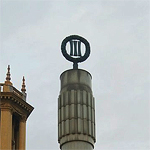 Miscellanea
Miscellanea
A.V. Korenevskiy
The Ideologeme of Deferred Demand, or How Many Times the Theory of “Moscow as the Third Rome” Was “Invented”? Part 2
The second part of the article, devoted to the doctrinal formation of the idea of the Third Rome, examines the process of this concept going beyond the Filofei’s Cycle and its grasp by scholarship at the end of the Middle Ages. It is shown that despite the rejection of this idea by the state authorities, it met a sympathetic response among the intellectual elite. The consequence of this was the widespread dissemination of the Filofei’s works and the inclusion of the verbal image of the Third Rome into the works unrelated to its authentic semantic context.
Publishing: 28/08/2022
How to cite: Korenevskiy A.V. The Ideologeme of Deferred Demand, or How Many Times the Theory of “Moscow as the Third Rome” Was “Invented”? Part 2 // Historical Courier, 2022, No. 4 (24), pp. 214–233. [Available online: http://istkurier.ru/data/2022/ISTKURIER-2022-4-18.pdf]
Previous part: Korenevskiy A.V. The Ideologeme of Deferred Demand, or How Many Times the Theory of “Moscow as the Third Rome” Was “Invented”? // Historical Courier, 2021, No. 6 (20), pp. 9–28. [Available online: http://istkurier.ru/data/2021/ISTKURIER-2021-6-01.pdf]
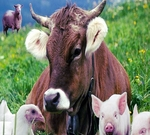 Review Articles
Review Articles
V.N. Mamyachenkov
The Animal Husbandry in the Middle Urals in 1953–1964s
Author examines problems of animal husbandry development in one of the most industrially developed regions of Urals – Sverdlovsk region (Middle Urals). Materials of the funds of leading archives of the region were used. Author provides analysis of the dynamics of main types of livestock in all types of farms in 1953–1964. At this time, region was gradually overcoming difficult legacy of Stalinist period, number of farm animals increased significantly. Most significant indicators were achieved in poultry farming. It is concluded that during this period, animal husbandry in Middle Urals could not meet needs of its population.
Publishing: 28/08/2022
How to cite: Mamyachenkov V.N. The Animal Husbandry in the Middle Urals in 1953–1964s // Historical Courier, 2022, No. 4 (24), pp. 234–239. [Available online: http://istkurier.ru/data/2022/ISTKURIER-2022-4-19.pdf]
 Scientific Life
Scientific Life
On the 50th anniversary of the birth of Doctor of Historical Sciences V.M. Rynkov
Publishing: 28/08/2022



